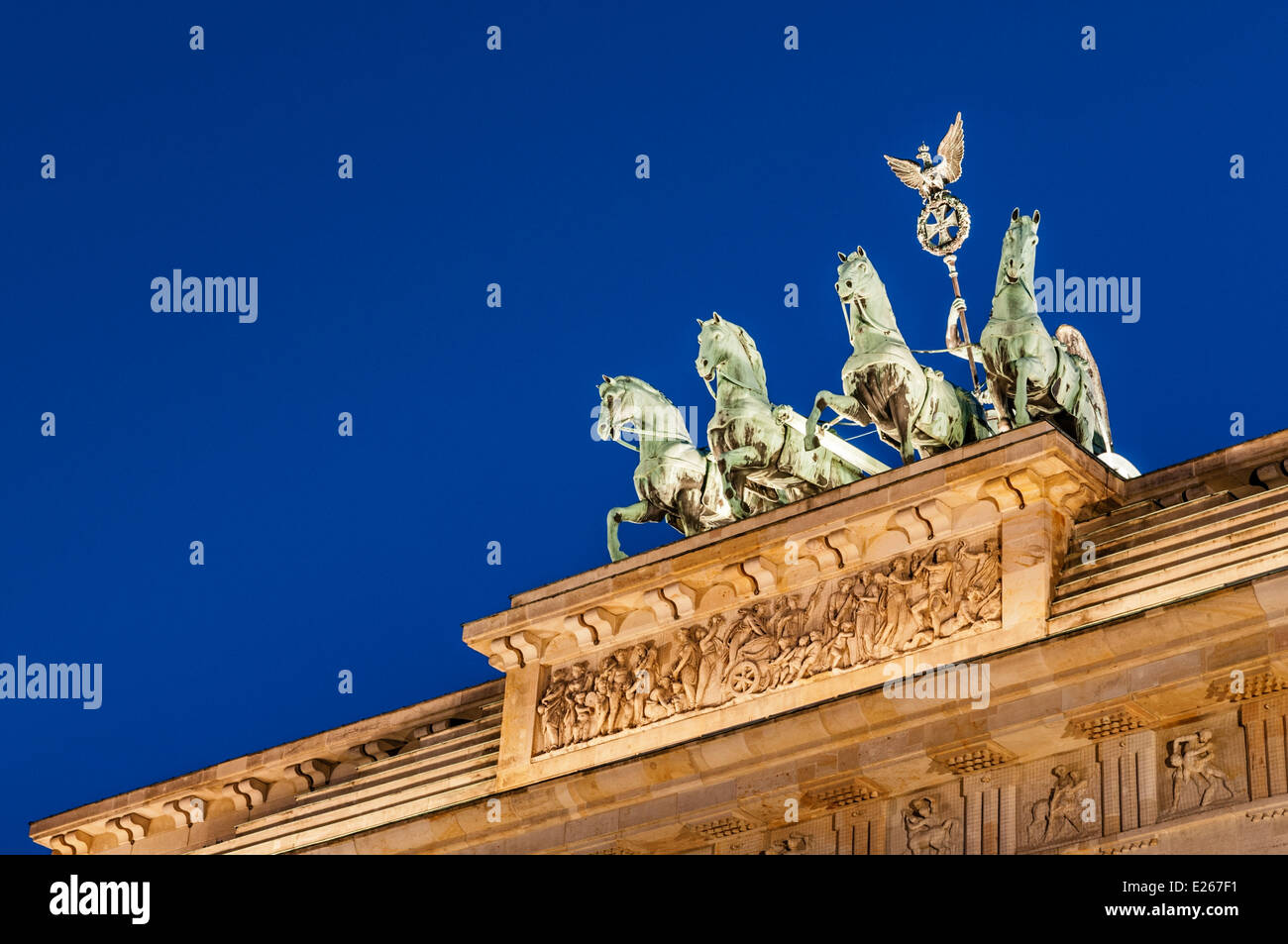
Once only ordinary passes were available for ordinary citizens, while the three middle were only for use by the royal family and high-ranking officials. The gate is equipped with five separate passes, of which the middle is distinguished by the largest width. It was used by the Łabski sandstone, obtained from the vicinity of Lwówek Śląski. The Brandenburg Gate measures 26 meters high, 65.5 meters wide and 11 meters deep. The inspiration of the Brandenburg Gate was Propyleje, or the huge gate of Athens Acropolis. The German designer Carl Gotthard Langhans (one of the leading representatives of the early Classicist movement) was responsible for its design. The Iron Cross was replaced with a wreath.The gate is one of the most recognizable monuments in Berlin. On September 27th, 1958, the Quadriga was restored and installed without cross and eagle on the Brandenburg Gate. In 1950, the relics of the Quadriga was removed at the instigation of the East-Berlin authorities and predominantly destroyed. The Quadriga saw triumphant parades in Imperial Germany and Nazi Germany until it was finally severely damaged in the Battle for Berlin in May 1945. In 1814, after the victorious conclusion of the wars of liberation, Schinkel replaced the olive wreath on the goddess' scepter with an iron cross crowned by the Prussian eagle, changing the figure's interpretation from a courier of peace into a goddess of victory. From 1806 to 1814 the statue was held captive in France as a Napoleonic trophy during the years of France and Prussia’s military rivalry for imperial domination. In 1806 Napoleon marched triumphantly into Berlin and carried the Quadriga away with him to Paris as a spoil of war. The Quadriga, which can be spotted from a long distance, was erected on the Gate in the summer of 1793. A Quadriga is a chariot drawn by four horses. The Brandenburg Gate is crowned with a Quadriga, a sculpture representing Victoria, the Roman the Goddess of Victory, "who brings peace", marching into the city, by Johann Gottfried Schadow.


The classical sandstone work is one of the masterpieces of this era and is the only surviving one of 18 previous city portals. Prussian sovereign Friedrich Wilhelm II was looking for a suitable architectural statement to enhance the approach into the Boulevard Unter den Linden.

The Brandenburg Gate was erected between 17 according to designs by Carl Gotthard Langhans whose vision was inspired by the Propyläen in Athens’ Acropolis.


 0 kommentar(er)
0 kommentar(er)
